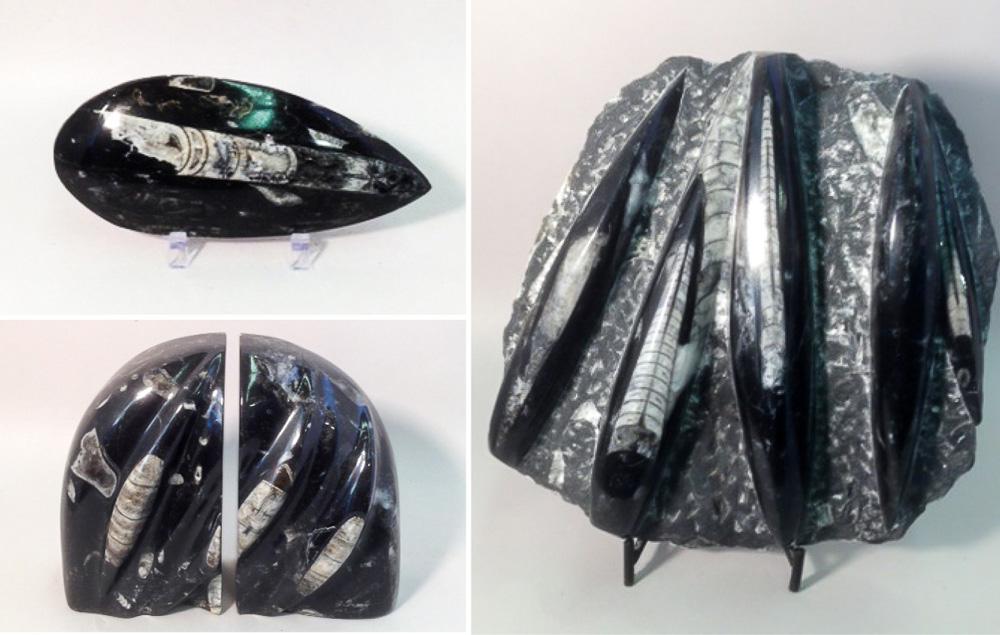 By Chelsea Reed
By Chelsea Reed
Orthoceras! It’s the world’s most popular fossil. These striking white creatures rest inside dark limestone, frozen in time. You may have seen them in a rock store before.
An orthoceras is an ancient mollusk that lived in the Ordovician period. At that time, the earth was mostly covered in water. It had a soft squid-like body inside a cone shell. Over time, its aragonite shell turned into calcite and fossilized. Let’s explore more fun facts about this fascinating marine fossil!
1. An orthoceras grew its own shell.
Unlike a hermit crab who must find and move into a bigger shell, an orthoceras didn’t have to go anywhere. It simply grew its shell bigger. It did this by creating a new dividing wall inside the shell called a septa. Today, you can see the septas separated by lines in the fossil. Scientists can tell the age of the orthoceras by looking at how many lines there are.
2. It could grow up to 14 feet!
The size range of orthoceras fossils is impressive! Many of them were about one to ten inches long. But if an orthoceras survived long enough, it could grow more than twice a person’s height. That’s as big as a great white shark!
3. It was the smartest primitive ocean species around.
Orthoceras ruled the ancient Ordovician oceans. They were fast swimmers that darted around with jet propulsion inside their shells! After “jetting,” an orthoceras used the air inside its shell cavity as a buoyancy device. If it encountered a predator, it could squirt out ink and escape.
4. The orthoceras was a hunter.
Part of what made orthoceras successful was its flexible diet. It was an accomplished hunter, but not a picky eater. It ate anything from tiny plankton to crawling trilobites for dinner!
5. Orthoceras fossils are found all over the world.
These popular fossils are found in Sweden, Morocco, and even in Antarctica. When archaeologists find orthoceras fossils, they are abundant. There are often thousands of them in the same digging site! These fossils have beautiful contrast, especially when they’re polished.
6. Their relatives are still alive today.
Orthoceras were the ancestors of the nautilus family. Today, the nautilus family includes octopus, squid, and cuttlefish. These species are commonplace, curious, and very intelligent.
 7. Orthoceras fossil slabs decorate many kinds of home decor.
7. Orthoceras fossil slabs decorate many kinds of home decor.
From office desks to walls and even countertops, people enjoy the look of orthoceras fossils in their homes. Some companies mine huge slabs of limestone with orthoceras fossils as wall alternatives to drywall and wood paneling!
A Piece of History Wherever You Are
The good news is, you can own genuine orthoceras fossils. Check out our fossil section at Micheal’s Gems and Glass, whether it be in person or online. It’s no wonder why orthoceras is the world’s most popular fossil!


